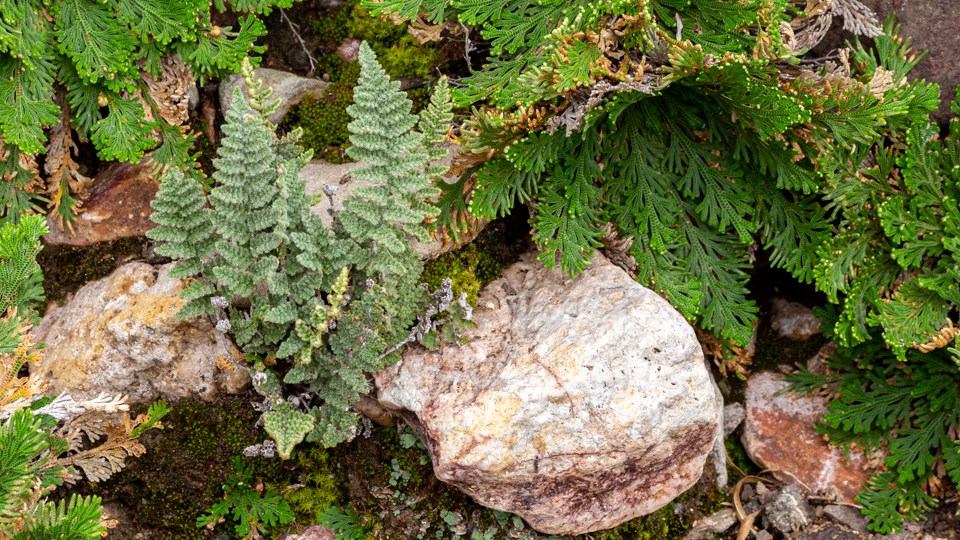
NPS/CA Hoyt Most people don't rush to Big Bend National Park to look for ferns. But perhaps they should. At least 36 fern species grow in the park. They're worth searching for because of their names alone. Who can resist a villous lipfern? Or a purple cliffbrake? How about a wavy scaly cloakfern? 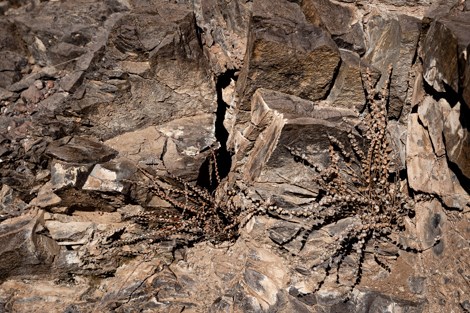
NPS/CA Hoyt Survival TricksFerns grow in the desert because they finesse the system, finding microhabitats that are just a tinier bit wetter than the surrounding landscape. Look for them growing among fractured rocks, under a tree, or peeking out from beneath a boulder. Depending on when you look, though, you may not be overly impressed. Most of the year, desert ferns are brown, crispy, and look—well—dead. 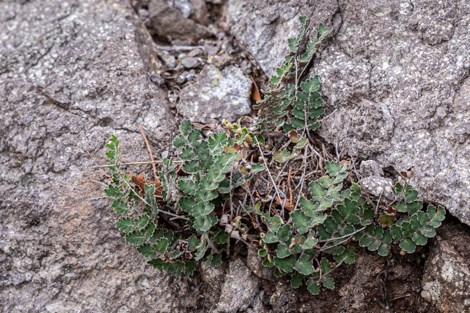
NPS/CA Hoyt Small is BetterMost desert ferns are more petite than their rainforest cousins. Remember that the plant takes in carbon dioxide during photosynthesis and releases oxygen and water as a waste product. The smaller the leaf, the less surface area from which water can be lost. 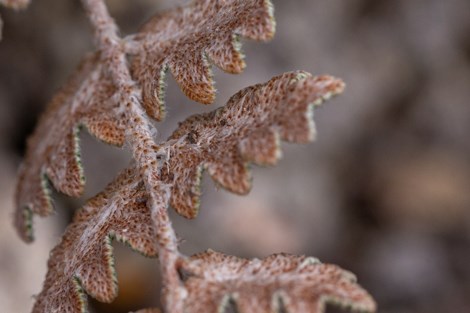
NPS/CA Hoyt Get HairyHave you noticed how many desert ferns are grey and fuzzy? The color is due to a dense coating of hair-like fibers. These light-colored hairs serve a couple of purposes. First, they reflect light, making the leaf-surface temperature cooler. Second, the hairs trap rain and dew to raise the humidity around the leaf surface. Keeping the air immediately above the leaf surface cooler and more humid reduces the atmosphere's evaporative demand. 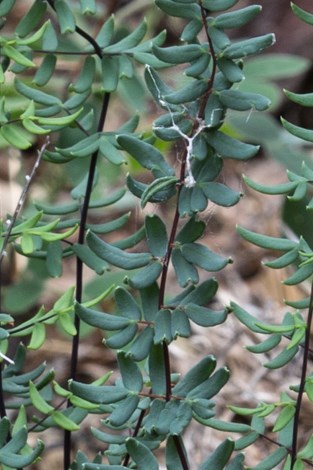
CA Hoyt Be WaxyMost water is lost (transpired) from specialized cells on the leaf called stomata. These cells open and close to absorb and release gases (carbon dioxide, oxygen, and water). But other parts of the leaf surface and stem can lose water through simple evaporation. Many ferns have a waxy cuticle on the leaf surface to help reduce incidental water loss. The cuticle makes the leaf thicker and helps seal in moisture. Thick Leaf MarginsThe last defense against moisture loss is the leaflet's ability to roll, thus protecting the surface and the spores. Many fern leaflets have thickened margins that help the frond curl. 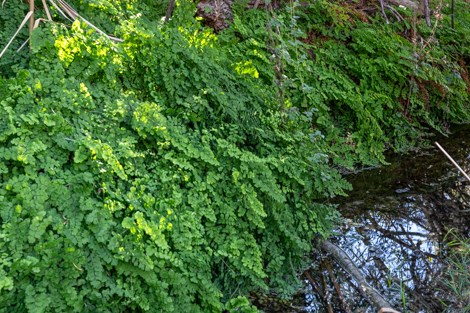
NPS/CA Hoyt Fern SpottingNot all ferns are adapted to desert conditions. Some seek places where there's enough moisture to grow. Delicate maidenhair ferns, for example, cling to shaded rock faces at seep springs such as Mule Ears Springs. 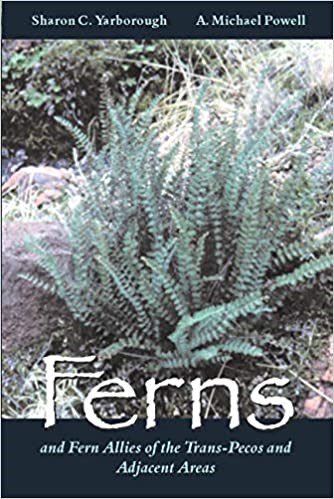
Learn MoreTo learn more about the ferns of Big Bend National Park and the surrounding region, check out this field guide:S.C. Yarborough and A. M. Powell (2002). Ferns and Fern Allies of the Trans-Pecos and Adjacent Region. Texas Tech University Press. |
Last updated: July 18, 2025
